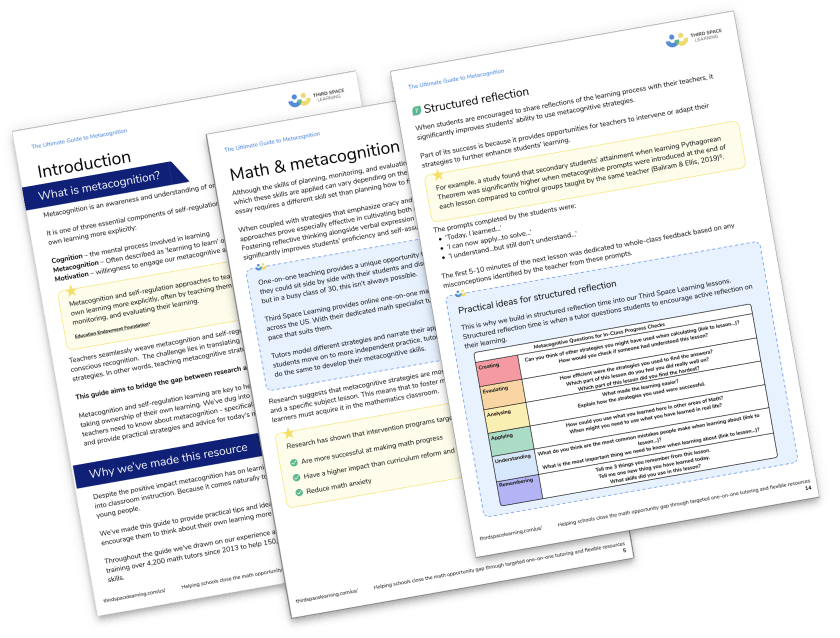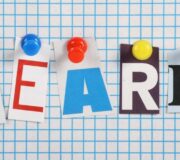The Most Effective Teaching Strategies To Use In Your School: Evidence Based And Proven To Work
Gather a room of teachers together and they will give you as many teaching strategies as there are topics in the K-12 curriculum. This article introduces the 13 most important teaching strategies you should be using – the ones that have real impact on learning outcomes and the ones that we use every week with the 7,000 students we teach in our one-on-one math interventions. We also include the 6 learning strategies that your students should know about in order to enable them to reach their learning goals.
Teaching and learning strategies taken from the best of global education research
One of the greatest advances that has been made in the last 5 years in the education sector in the U.S. and globally is the increasing influence of large scale research and evidence informing what we know about how children learn, and consequently, how we can better teach them.
Whether that’s the emphasis on evidence-based interventions under ESSA, the growing ResearchEd movement, or even just the vibrant #edutwitter community, many more teachers now are taking their professional development into their own hands.
More teachers than ever are aware of John Hattie’s “Index of Teaching and Learning Strategies,” and wary of implementing new instructional strategies unthinkingly; no one wants to be stung by another “learning styles” waste of effort.
But even when you know there may be better and more efficient ways to develop your students’ conceptual understanding, choosing which of these teaching strategies to start with can be a challenge. This article aims to guide you through this.
13 Teaching Strategies Poster
Use these 13 tried and tested teaching strategies as the basis for staff meetings. Creates professional development opportunities for staff, and help them maximise student progress.
Download Free Now!What are teaching strategies?
Teaching strategies are methods and techniques that a teacher will use to support their students through the learning process; a teacher will choose the teaching strategy most suitable to the topic being studied, the level of expertise of the learner, and the stage in their learning journey.
In one lesson, a teacher may use many different teaching strategies with different end goals. The most effective teaching strategies are those proven to work over large scale trials. There is no requirement for a teaching strategy to be innovative, although, of course, some of them are.

Meet Skye, the voice-based AI tutor making math success possible for every student.
Built by teachers and math experts, Skye uses the same pedagogy, curriculum and lesson structure as our traditional tutoring.
But, with more flexibility and a low cost, schools can scale online math tutoring to support every student who needs it.
Find out more13 teaching strategies for elementary and middle school
These are the 13 most important teaching strategies that you and all the teachers in your school should have in your teaching toolkit to make the most out of class time and increase student engagement.
No one is suggesting you will use them in every lesson, but an awareness of what they are and their potential impact is essential to improve your practice. These can be implemented in the classroom and used as math intervention strategies.
And of course if you’re a school leader, or responsible for professional development in your school, knowing what’s current and evidence-backed is key so that you can make an informed choice the next time somebody suggests implementing a new or innovative teaching technique.
1. Know your students and develop their respect
This may sound basic, but the basis of all good teaching is an understanding of your students and their learning needs. Aligned to this is the respect between you and your students. The relationship between teacher and student is a vital element of the learning experience. Memorizing names, taking time to get to know a new class from the first day, and understanding what motivates them and their barriers to learning – student centered learning is an often overlooked teaching strategy!
Our spoken AI tutor, Skye, takes the time to get to know each student throughout the lessons by asking about their hobbies and interests or the kinds of things they’ve been learning in school.
Read more: How To Support A Child With Autism In The Classroom
2. Appropriate use of summative and formative assessments
The first stage here is making sure you know the difference between formative and summative assessment. It may sound obvious, but you’d be surprised how many teachers don’t use each appropriately.
To cover them quickly:
Summative assessment refers to an assessment that takes place after a block of work has been completed, whether this is a unit or a school year. They are best thought of as assessments of learning.
Formative assessments are those that take place day-to-day and are used to gauge students’ understanding of a topic – they are assessments for learning. Formative assessment is often used in a diagnostic capacity to help us identify whether students are struggling with a topic in the moment. This can then guide and adapt our instruction during the lesson to better meet children’s needs.
Using regular formative and summative assessments correctly helps reduce student’s test anxiety around more formal exams.
Diagnosis of children’s gaps using formative assessments
We advocate the use of these kinds of diagnostic assessments to identify a child’s misconceptions. Usually, this is best achieved through a set of multiple choice questions.
As well as the correct answer, we can include multiple distractors, incorrect answers, based on a misconception a child may have, e.g. around multiplying. If a child chooses an incorrect answer, then we can easily identify exactly where their thinking has gone wrong.
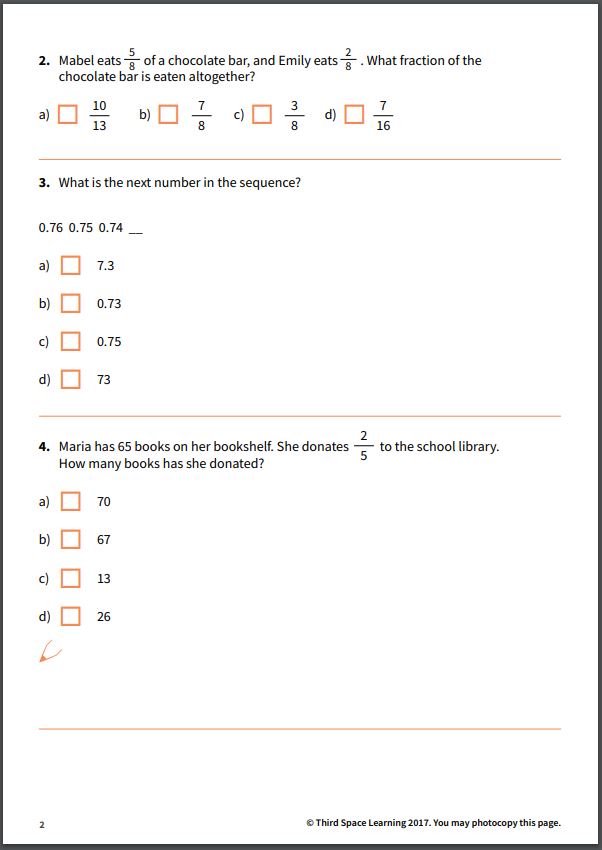
For students using our elementary math tutoring, we use a diagnostic skill check in and a skill check out question at the start and end of every intervention lesson for progress monitoring. This is responsive, meaning questions are based on answers to an earlier question. This helps us more clearly identify not just misconceptions and weaknesses, but also where a child’s strengths lie and what needs less time spent on.
3. Teach the vocabulary
With the new focus in the curriculum on knowledge organizers, there’s no excuse for children being without the relevant topic vocabulary. They need the words to be able to create the thoughts and the sentences to confidently speak about a given topic.
This is why Skye will always pre-teach important math vocabulary at the start of a lesson with their students, explaining any new terms and checking for understanding of previously covered ones.
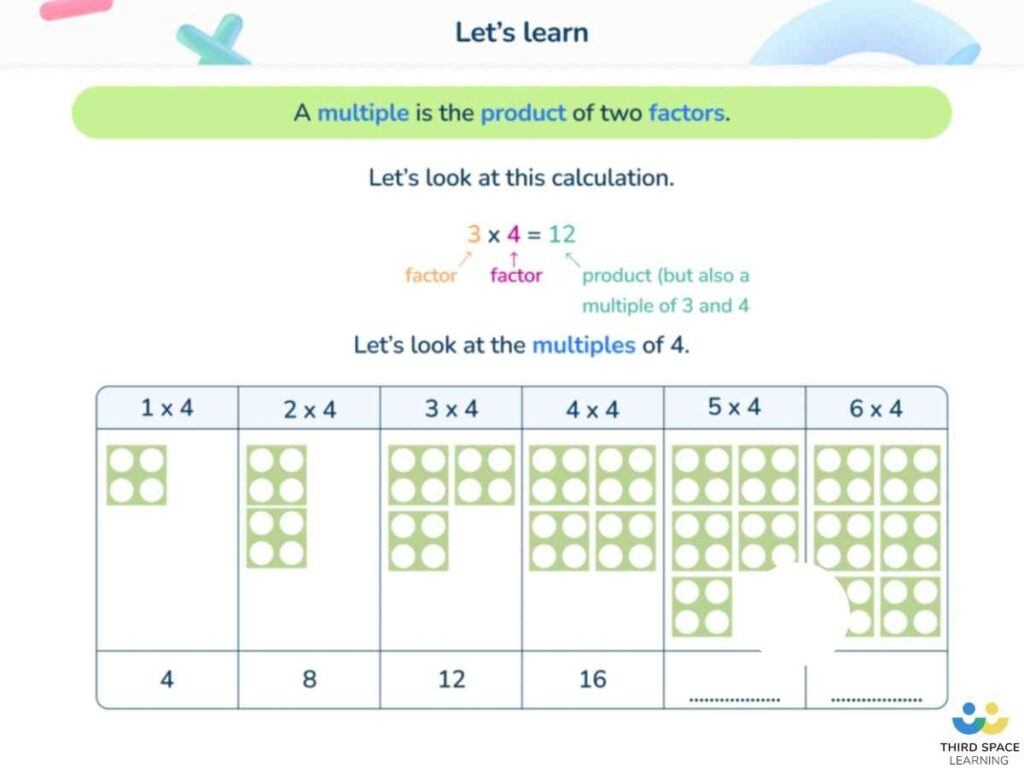
4. Explicit instruction
Also known as direct instruction, this teaching strategy is teacher-led and focuses on frequent questioning and guided practice to help students learn a topic.The backbone of explicit instruction is the use of the worked example in an Example-Problem Pair. This involves demonstrating a worked example in its entirety in silence alongside a problem that students will then attempt.
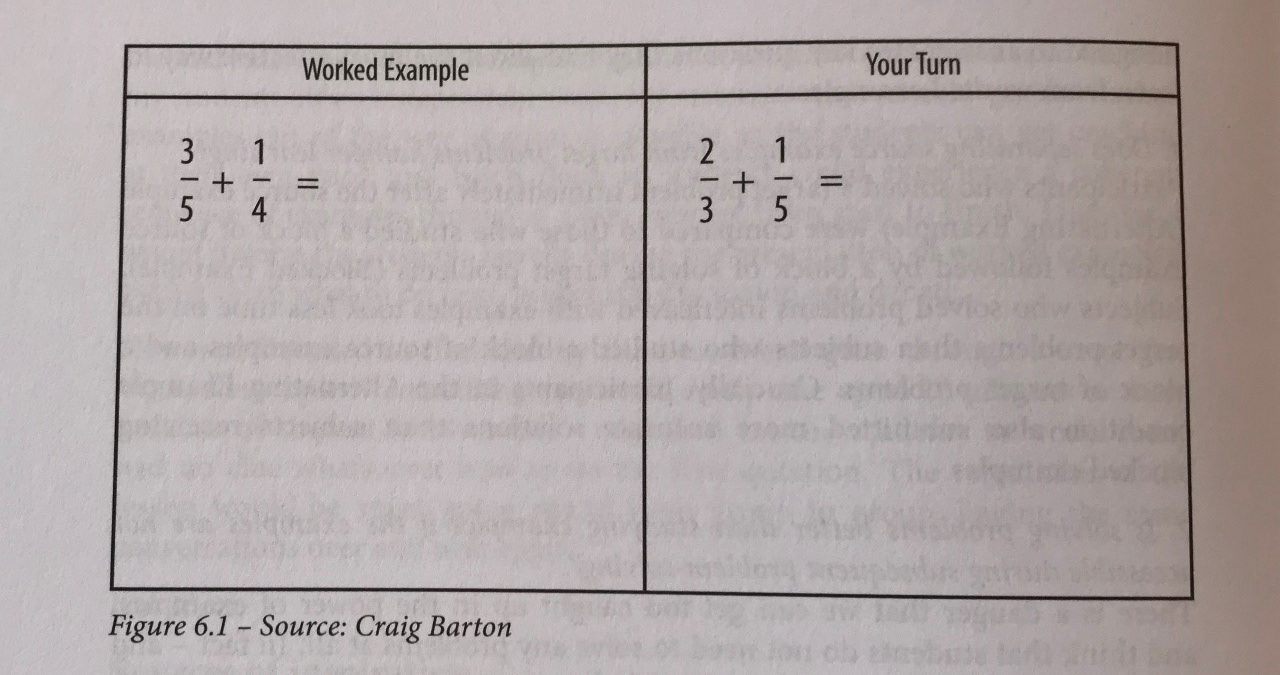
Silence is important in order to ensure students’ attention is not split between the example and the spoken explanation, making it more likely that both will be more fully absorbed and retained.
A student on a Third Space Learning’s online math intervention program will need to have all other distractions eliminated so they can focus entirely on the information on their screen and what Skye is asking them to do. Skye can present a worked example in real time in a learning environment without any visual or auditory disruptions.
5. Effective questioning techniques
While we are all aware of the importance of questioning as a tool to gauge students’ understanding of a topic, there are definite techniques to improve the efficacy of your questioning in the classroom.
Questions such as “Are you sure?” and “How do you know?” encourage students to engage in grade-level-appropriate critical-thinking to establish how confident they are in an answer and why, while others such as “Is there another way?” help to highlight where multiple methods to derive a solution may exist.
Skye encourages students to verbalize their reasoning and ask questions to ensure they have really understood the topic at hand: “How do you know that answer is right?”, “Can you tell me how else you could work it out?” or “What do you need to do first to answer this question?” are all questions that come up frequently during our lessons!
Goal-free problems are another questioning strategy worth considering using in your classes.
6. Deliberate practice
One of the most effective ways of introducing new concepts to a class, Deliberate Practice involves breaking learning down into a series of sub-skills, each of which is deliberately practiced in turn.
The 5 steps involved in deliberate practice are:
- Isolate the skill
- Develop the skill
- Assess the skill
- Final performance
- Retrieval practice later
As an example, when teaching long multiplication, this is how we might use deliberate practice:
- identify (isolate) each specific sub skill involved in multiplication using the standard algorithm;
- practice (develop) each of these one by one;
- Assess students’ use of these skills before moving on;
- have students put them all together for a final performance – in this case a full multiplication problem using the standard algorithm;
- return to this topic in later weeks and months to check that students still retain those skills.
At the beginning of every Third Space Learning intervention session, students are given a diagnostic skill check in question related to previous knoweldge; this enables Skye to check that they have retained the relevant skills (and where they have not, to return to the topic).
7. Differentiation
Differentiated instruction in elementary school can be difficult to achieve – poor differentiation strategies risk widening the gap we’re attempting to close.
But there are plenty of impactful differentiation strategies; techniques such as interleaving and phased learning, as well as the use of math manipulatives and formative assessment, are among those proven to have a beneficial impact on students when properly employed.
As we’ve already discussed, formative assessment is a significant aspect of how Third Space Learning gauges student progress. But we also make use of several other differentiation strategies during lessons, such as spaced practice, interleaving and a mixture of direct instruction and inquiry-based learning.
8. Reinforcing effort/providing recognition
Helping students link putting effort into a task and receiving recognition is an important step in developing a classroom environment that fosters active learning.
Encouraging students to put more effort into activities only goes so far without something to provide them with the motivation to do so. Praise and recognition are motivators that students are already familiar with; shifting them from being correct to giving full effort can be highly effective.
Third Space Learning’s AI tutor establishes an effort-focused environment right from the first session, encouraging students to talk through their answers and celebrate their mistakes as learning opportunities, ensuring they approach each intervention as another chance to try.
9. Metacognition
Literally “thinking about thinking,” metacognition has been recognised as one of the most effective, lowest cost teaching strategies there is, with students making an average of seven months’ additional progress.
Metacognition in elementary schools often incorporates some of the other effective teaching strategies, such as questioning in the classroom – “How do you know?” not only asks students to justify their solutions, but has them thinking about their own thought processes for deriving that solution.
Teaching students how to learn math, plan, monitor and self-evaluate their own learning also improves student motivation and encourages them to work harder in lessons, tying into another teaching strategy. Furthermore, it develops their communication and literacy skills.
Skye is trained to use a variety of metacognitive strategies as standard during sessions, and we provide students with numerous moments for self-reflection both during and after sessions.
10. Personalized learning
It might sound obvious, but students are more likely to engage with learning when it is more targeted to them and appeals to their interests! This may be difficult to achieve early on – especially with large classes of 30 students – but as familiarity and rapport builds throughout the year, it should become easier to make activities and even questions more personalized to individual children.
At Third Space Learning, every session starts with a skill check in question. If students demonstrate a good understanding, Skye moves them straight on to independent practice. If they do not show sufficient pre-requisite skills, Skye walks students through the lesson step by step.
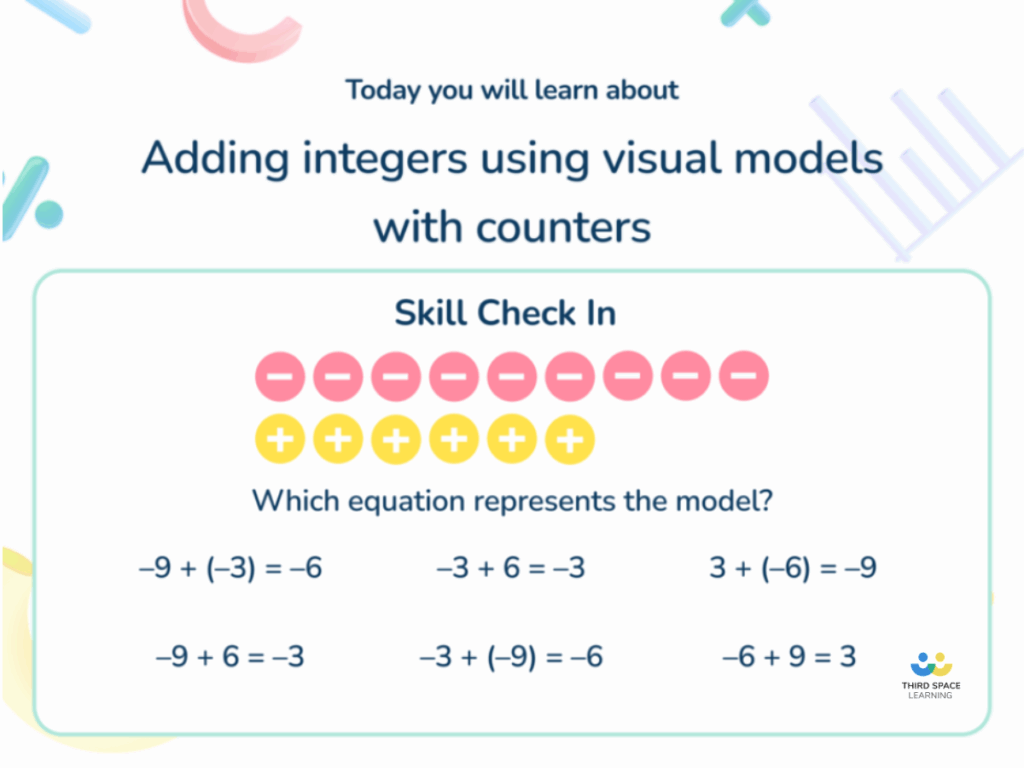
11. Collaborative learning
Also referred to as “cooperative learning,” the idea of having students work in groups for certain classroom activities won’t be new to most teachers. A popular technique to promote this collaboration is through think-pair-share.
However, the impact of group work can vary widely, and to make it most effective, teachers should focus on well-structured tasks that promote talk and interaction between students.
The concept of “competitive” collaborative learning (where groups of students compete against one another) has been shown to have some impact, but caution is advised in case students focus more on the competition rather than the learning.
12. Explicitly teach thinking skills & problem solving techniques
Mathematical problem solving techniques don’t always come naturally to students; while metacognitive strategies such as those mentioned above make it more likely that students will be able to apply critical thinking to a problem, there is no set way to ensure that this will happen.
Research into the topic suggests that context-agnostic deployment of problem solving techniques only occurs once students have secure domain knowledge and the opportunity to practice.
Without these, students often fall into the trap of attributing importance to the so-called “surface features” of a problem, which we naturally discount as irrelevant to the actual math involved.
That said, explicit teaching of thinking skills is still of considerable importance; once domain knowledge has been (relatively) secured, teaching students how to recognize and focus on the “deep structure” of problems enables them to apply their knowledge more effectively.
Try using several “Same Surface Different Deep” (SSDD) problems in lessons – where the surface features of the questions are the same, but the deep structure varies (e.g. division, multiplication, addition, etc.).
These questions eliminate any confusion regarding surface features and thus allow students to focus on differentiating the deep structures.
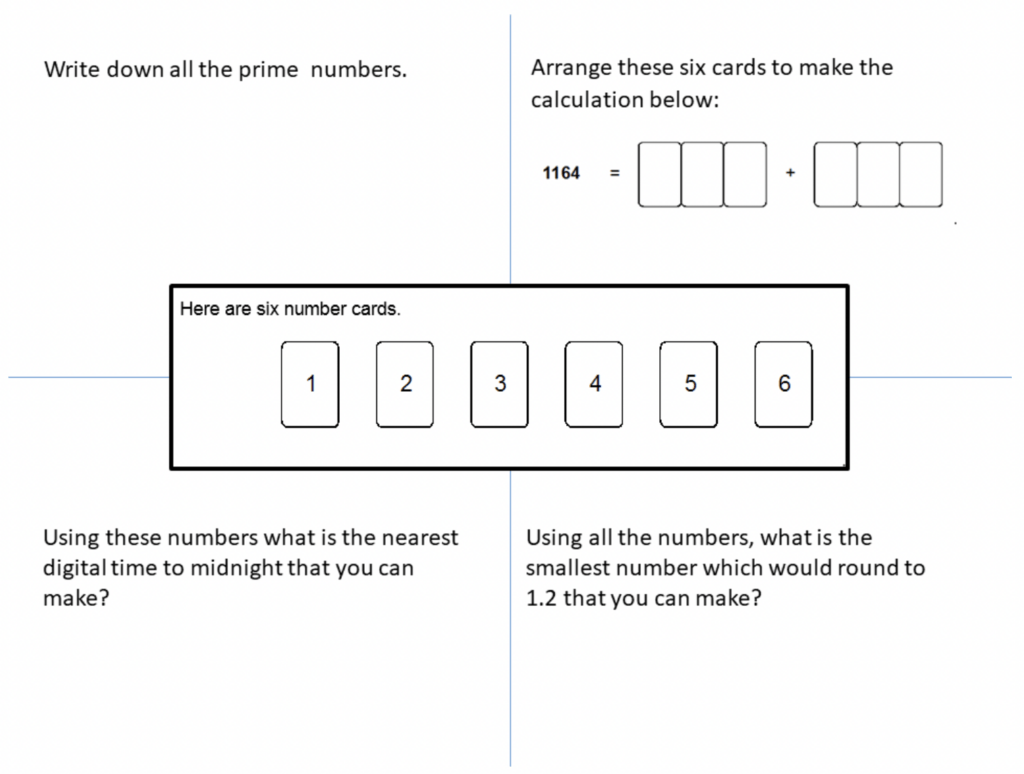
13. Modeling and scaffolding
You may already be familiar with the “I do, We do, You do” method of scaffolding, but it’s worth taking some time to dive into why it’s as effective as it is.
Modeling is one of the most important factors in ensuring student learning of a particular topic, but it is most impactful when it can introduce new concepts without increasing students’ cognitive load – hence the “I, We, You” approach.
By building from teacher-led, to joint construction, to independent working, we create a structure that presents learning as less of a step-change and more of an actual process. It also allows us greater flexibility; more time can be spent on one stage, e.g. joint construction if it becomes necessary.
Gradual scaffolding with support slides
All Third Space Learning intervention lessons make use of this kind of gradual scaffolding method, and our online platform lends even more flexibility to the scaffolding structure – Skye can pull from a bank of “support slides” if spending more time on a concept or process is necessary.
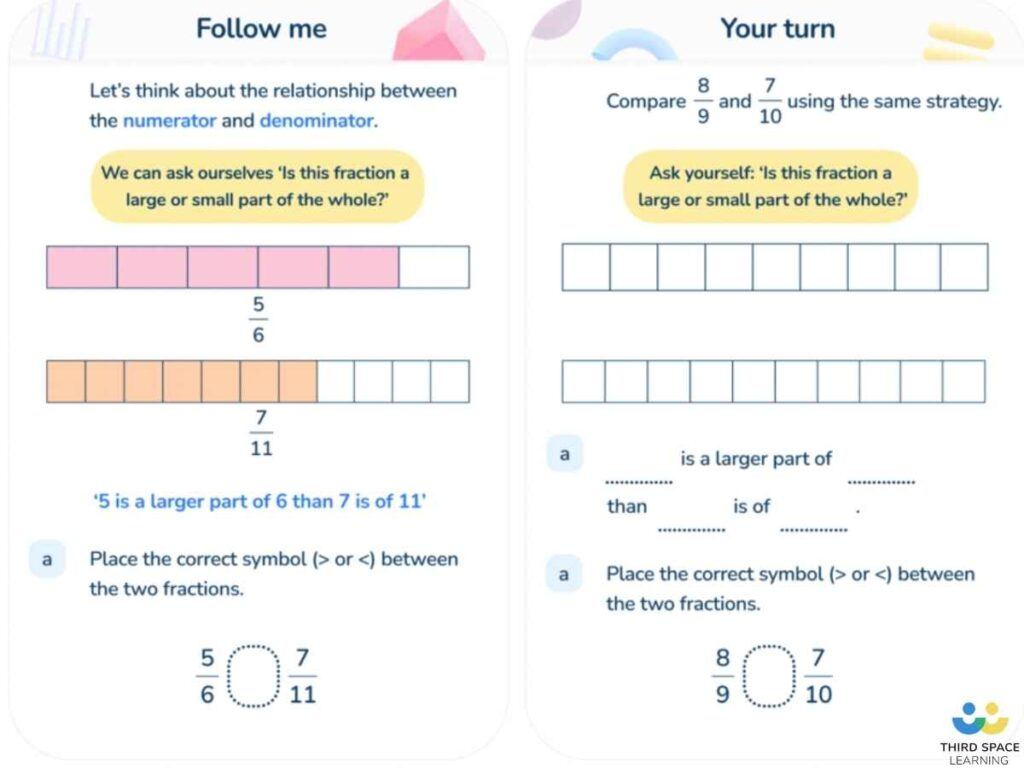
Read more: Teaching tips for teacher observations
Other teaching strategies to consider
The teaching strategies above form the basis of our one-to-one lessons, but some other teaching practices you’ll need to consider in your own classroom include:
Use of education technology
Knowing when and where to bring technology into the classroom is a delicate balancing act. While children tend to react well to technology-based lessons, there’s always the risk that they focus on the tech over the learning.
Read more:
- How To Do An Education Technology Audit In Your School
- 10 Benefits of Online Tutoring Vs In Person Tutoring
Behavior management
Effective classroom management strategies are their own topic, but there’s no doubt that a well-behaved class (not necessarily a perfectly-behaved one) is far more likely to engage with lessons.
Inquiry-based learning
While triggering the curiosity of your students for a topic is the necessary first step in inquiry-based learning, presenting them with the opportunity to research and report on the topic is where learning really occurs.
How you manage class discussions, e.g. ‘Think, pair, share’
Somewhat related to behavior management, class or group discussions are most beneficial when they have a clear, well-established structure to them. Students should not only feel they have the opportunity to share their thoughts, but understand that others’ thoughts also have value.
Feedback process and understanding
The single most impactful teaching strategy when used correctly, feedback (whether from the teacher or another source, such as a peer) needs to be specific, encouraging, and actionable – students need to be able to understand where they could improve and how.
Read more: Why My School Banned Marking
Growth Mindset
Separate from praise and rewarding effort, developing a growth mindset can be a very valuable tool in developing students’ resilience and fostering a more positive attitude towards both math specifically and learning in general.
Read more: How To Get Growth Mindset Right In Primary Schools
Read more
- Quality First Teaching Strategies Checklist
- What is a spiral curriculum?
- Introduction to Cognitive Load
- Teaching Bottom Set Math
- Primary School Teachers’ Guide to Learning and Memory
- What Is Variation Theory?
- Dyscalculia in Schools: A Guide To Identifying And Supporting Students With “Math Dyslexia”
- ADHD in the Classroom
- Rote Memorization: Is It Effective In Education?
6 learning strategies
Last, but not least, central to any good teaching practice is explicitly teaching learners of all ages about learning strategies. These are the 6 learning strategies we think every student should be familiar with by the end of elementary school.
1. Spaced practice
Spaced repetition ensures that learned material is revisited at regular intervals instead of all at once much later on, when more of it is likely to be forgotten. For older students, study calendars can be of immense help leading up to state-wide or end of year exams.
2. Retrieval practice
Retrieval is the process of recalling information purely from memory, without the aid of learning materials. Effective retrieval practice helps embed information more thoroughly in our minds, since we no longer need context to recall it.
3. Elaboration
Tied into questioning in the classroom, elaboration puts the onus on students to do more than “just” recalling information. The use of open-ended questions such as “How did I get that answer?” help students to make connections between the things they’ve learned rather than seeing them as several unrelated facts.
4. Interleaving
A wealth of research is now available that suggests the benefits of interleaving – mixing practice of different skills with one another – in helping students better identify the necessary math strategies for problem solving. Interleaving with connected topics (e.g. division and multiplication) amplifies this effect.
5. Concrete examples
As math educators, the Concrete Representational Abstract Approach is embedded into the way we teach. Within our online tutoring, we have many different ways of explaining a topic and as an extension, we may ask students to come up with their own concrete examples for concepts, based on the examples we’ve used in explaining the concept to them.
6. Dual coding
Combining words and visuals in teaching materials. This isn’t referring to speech (as we established earlier), but having students create some kind of visual aid (e.g. a sketch, a diagram) to accompany written text can help them reinforce the concept in their brain in two different ways, making it easier to recall. Anyone who’s created slides for their students will be familiar with the challenge of imparting information through words and pictures.
References
- Hattie’s index of teaching & learning strategies and their effect size
- ResearchEd
- Teaching in Effective Primary Schools: Research into Pedagogy and Children’s Learning (Siram, Taggart et. al) published by UCL IOE Press.
Read more:
- 9 Tutoring strategies to boost learning
- Tier 2 math intervention strategies to accelerate learning
- 7 Benefits of One-on-One Tutoring
- 5 Benefits Of Online Tutoring
Do you have students who need extra support in math?
Skye—our AI math tutor built by experienced teachers—provides students with personalized one-on-one, spoken instruction that helps them master concepts, close skill gaps, and gain confidence.
Since 2013, we’ve delivered over 2 million hours of math lessons to more than 170,000 students, guiding them toward higher math achievement.
Discover how our AI math tutoring can boost student success, or see how our math programs can support your school’s goals:
– 3rd grade tutoring
– 4th grade tutoring
– 5th grade tutoring
– 6th grade tutoring
– 7th grade tutoring
– 8th grade tutoring
The content in this article was originally written by Anantha Anilkumar at Third Space Learning and has since been revised and adapted for US schools by elementary math teacher Katie Keeton.
